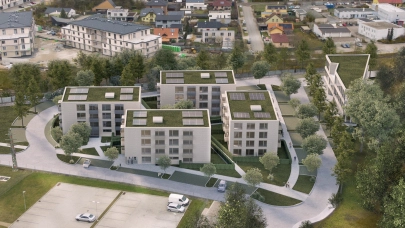
Warburg-HIH Invest Real Estate is improving the carbon footprint of its portfolio within the scope of its ESG strategy. The real estate portfolio is gradually being converted to an environmentally-friendly supply of electricity from ecological sources and heat from carbon-neutral natural gas. In joint undertaking with the Hamburg-based energy provider Lichtblick, a total of 126 properties are currently being converted to the use of green electricity. This will allow for a reduction of carbon emissions in the portfolio by around 7,500 tonnes annually. Warburg-HIH Invest will also be gradually converting its entire European real estate portfolio to green electricity.
“The comprehensive optimisation of our properties’ energy consumption is an important step towards the successful implementation of our ESG strategy within portfolio management. Sustainability criteria are becoming an increasingly important factor for many institutional investors when making investment decisions. This growing significance will become especially evident from March 2021, when the disclosure regulation comes into effect and real estate fund providers will have to present their sustainability activities in a transparent manner,” says Alexander Eggert, Managing Director of Warburg-HIH Invest.
In addition, properties with a gas supply within the Warburg-HIH Invest portfolio will be using carbon-neutral natural gas in future. Working together with operating costs specialist Argentus helped optimise the gas supply. Within the scope of an allocation process, Argentus awarded the gas supply volume to E.ON Energie Deutschland GmbH on a bundled basis. The conversion will reduce annual carbon emissions by 1,300 tonnes in balance sheet terms. In addition, heating costs will be reduced by around €150,000 annually through central purchasing following the complete conversion.
Carbon-neutral natural gas is fossil natural gas – the resulting emissions are offset through the support of climate protection projects in other parts of the world that reduce carbon emissions locally. For example, supporting the operation of a hydroelectric power station in the northern Indian state of Himachal Pradesh. The carbon savings achieved in this way are annually certified by TÜV Nord.



